Oyster Mushroom Identification: A Complete Guide to Finding and Recognizing These Delicious Fungi
Introduction to Oyster Mushroom Identification
Oyster mushrooms (Pleurotus species) rank among the most sought-after wild edible fungi, prized for their delicious flavor, nutritional benefits, and relative abundance in nature. Their distinctive appearance, typically characterized by shell-shaped caps growing in clusters on trees and logs, makes them approachable targets for beginning foragers. However, accurate identification remains crucial, as several lookalikes exist in the wild, some of which can cause adverse reactions if consumed.
This comprehensive guide will walk you through the key identifying features of various oyster mushroom species, their preferred habitats, seasonal availability, and crucial differences from potentially dangerous lookalikes. Whether you're an aspiring forager, a mushroom enthusiast, or simply curious about identifying these fascinating fungi, this resource will help you develop the skills and knowledge necessary for confident oyster mushroom identification.
While many oyster mushroom varieties are now commercially cultivated, the ability to identify wild specimens connects us to ancient food traditions and deepens our relationship with the natural world. The satisfaction of finding, correctly identifying, and safely enjoying wild oyster mushrooms is an experience that combines outdoor adventure, scientific observation, and culinary reward. With the right information and a cautious approach, identifying oyster mushrooms can be a safe and rewarding pursuit.
Key Characteristics of True Oyster Mushrooms
Understanding the fundamental features shared by true oyster mushrooms provides the foundation for accurate identification:
-
Growth pattern and habitat:
- Grow in shelf-like clusters (sometimes overlapping)
- Found primarily on dead or dying hardwood trees, logs, and stumps
- Rarely grow from the ground (an important distinguishing feature)
- Prefer shaded, moist environments like forests, though some species tolerate more exposed conditions
- Connect directly to the growing surface without a traditional central stem
-
Cap characteristics:
- Shell or oyster-shaped (hence the name)
- Size ranges from 2-10 inches (5-25 cm) across, depending on species and maturity
- Smooth texture, sometimes with slight fuzzy appearance when young
- Colors include white, cream, tan, gray, brown, or even blue or pink, depending on species
- Often display a subtle sheen or silky appearance when fresh
- Typically have inrolled margins when young, becoming wavy or lobed with age
-
Gill structure:
- Gills run down the stem (decurrent)
- White to cream colored in most species
- Close together with many short gills (lamellulae) between full-length gills
- Often show interconnections near the stem (anastomosing)
- Become more yellowish with age
-
Stem characteristics:
- Short, stubby, and often eccentric (off-center) or lateral (on the side)
- Some species appear nearly stemless
- White to grayish in color
- Tough and fibrous texture
- Usually hairy or fuzzy at the base
-
Flesh properties:
- White, firm, and pliable when fresh
- Relatively thin compared to cap width
- Does not change color when cut or bruised
- Mild, pleasant mushroom smell sometimes described as anise-like or seafood-like
- Remains white when dried (doesn't darken significantly)
-
Spore characteristics:
- White to lilac-gray spore print (an important ID feature)
- Cylindrical, smooth spores when viewed microscopically
- Often visible as white dust beneath mature specimens in the wild
These core characteristics form the basis for identifying oyster mushrooms as a group, though specific species will display variations in these features, particularly in color, size, and preferred growing conditions.

Common Oyster Mushroom Species Identification
Pearl Oyster (Pleurotus ostreatus)
The most widespread and well-known oyster mushroom species in North America and Europe:
-
Visual identification markers:
- Cap color: Gray to blue-gray when young, fading to tan or light brown with age
- Cap size: 2-8 inches (5-20 cm) across
- Cap shape: Shell-like to fan-shaped, often with wavy margins
- Gills: White to cream, deeply decurrent (running down the stem)
- Stem: Short, stubby, white to grayish, often nearly absent
- Growth pattern: Tight, overlapping clusters of multiple individuals
-
Seasonal appearance:
- Primary fruiting period: Late fall through early spring
- Often appears after first frost in temperate climates
- Can withstand cold temperatures, even light freezing
- May produce multiple flushes through winter in milder climates
-
Preferred habitat and substrate:
- Deciduous hardwoods, especially elm, oak, maple, and beech
- Less commonly on aspens and poplars
- Typically grows on dead or dying trees, fallen logs, and stumps
- Prefers shaded, humid environments in mixed hardwood forests
-
Distinctive characteristics:
- Anise-like or seafood smell when fresh
- Caps may develop slight bluish tints in cooler conditions
- Spore print white to lilac-gray
- Often fruits abundantly after fall rains followed by cold spells
The Pearl Oyster is often considered the standard against which other oyster varieties are compared, making it an excellent starting point for identification skills.
Golden Oyster (Pleurotus citrinopileatus)
A striking yellow variety originally from eastern Asia but now found worldwide:
-
Visual identification markers:
- Cap color: Bright yellow to golden orange
- Cap size: 1-4 inches (2.5-10 cm) across
- Cap shape: Funnel-shaped when young, becoming flatter and more irregular with age
- Gills: Yellow, crowded, running down the stem
- Stem: Usually well-developed, central to slightly off-center, white to yellowish
- Growth pattern: Grows in dense clusters with numerous small caps
-
Seasonal appearance:
- Primary fruiting period: Late spring through early fall
- Prefers warmer temperatures than Pearl Oyster
- Most abundant during humid summer months
- Rarely appears during cold weather
-
Preferred habitat and substrate:
- Various hardwoods, particularly elm, maple, and beech
- Commonly cultivated on sawdust and agricultural waste
- Wild specimens found mostly in deciduous forests
- More heat-tolerant than other oyster varieties
-
Distinctive characteristics:
- Vibrant yellow coloration unmistakable when fresh
- Delicate, thin flesh compared to other oyster varieties
- Often has a more fragrant, fruity aroma
- Forms denser clusters with more numerous, smaller caps
- Turns brown-orange with age or excessive sun exposure
Golden Oysters have become increasingly common in North America due to their popularity in cultivation, with some specimens escaping to establish wild populations.

Pink Oyster (Pleurotus djamor)
Known for its vibrant color and tropical origin:
-
Visual identification markers:
- Cap color: Bright pink to salmon, fading with age
- Cap size: 1-5 inches (2.5-12.5 cm) across
- Cap shape: Fan or shell-shaped with wavy margins
- Gills: Pink to salmon-colored, crowded, decurrent
- Stem: Very short or absent, pink to white
- Growth pattern: Forms shaggy, ruffled clusters
-
Seasonal appearance:
- Primary fruiting period: Summer months only in temperate climates
- Year-round in tropical regions
- Cannot tolerate cold temperatures
- Fruits quickly and deteriorates rapidly after maturity
-
Preferred habitat and substrate:
- Tropical hardwoods naturally
- In cultivation, grows on various hardwood substrates and agricultural byproducts
- Rarely found wild in temperate climates (except in very hot summers)
- More common as a cultivated species than wild-foraged
-
Distinctive characteristics:
- Most colorful of all oyster varieties
- Color fades significantly with cooking
- Has a stronger, somewhat woody or radish-like flavor
- Very short shelf life compared to other oysters
- White spore print (important for identification)
Pink Oysters are more commonly encountered as cultivated specimens at farmers' markets than found in the wild in most temperate regions.
King Oyster (Pleurotus eryngii)
The largest and meatiest of the oyster mushrooms:
-
Visual identification markers:
- Cap color: White to tan or light brown
- Cap size: 2-6 inches (5-15 cm) across
- Cap shape: Convex becoming flat or slightly depressed
- Gills: White to cream, widely spaced, running down the stem
- Stem: Thick, solid, white, central to slightly off-center
- Growth pattern: Usually grows individually or in small groups rather than large clusters
-
Seasonal appearance:
- Primary fruiting period: Spring and fall in Mediterranean climates
- More commonly cultivated than found wild
- Prefers moderate temperatures
- Fruiting can be induced year-round in cultivation
-
Preferred habitat and substrate:
- Natural habitat includes grasslands and meadows
- Grows in association with roots of plants in the Apiaceae family
- Unlike other oysters, can grow terrestrially (from ground)
- Wild specimens most common in southern Europe and North Africa
-
Distinctive characteristics:
- Thick, meaty stem unusually large compared to cap
- More resembles traditional mushroom shape than other oysters
- Doesn't typically grow in large overlapping clusters
- Has the longest shelf life of oyster varieties
- When young, cap edges strongly inrolled
King Oysters differ significantly in appearance from other oyster species but share genetic and culinary similarities, making them an important member of the group to recognize.
Blue Oyster (Pleurotus ostreatus var. columbinus)
A striking variety with distinctive coloration:
-
Visual identification markers:
- Cap color: Dark blue to gray-blue when young, fading to gray-brown with age
- Cap size: 2-8 inches (5-20 cm) across
- Cap shape: Shell or fan-shaped with wavy margins
- Gills: White to cream, deeply decurrent
- Stem: Short, off-center, whitish
- Growth pattern: Overlapping clusters similar to Pearl Oyster
-
Seasonal appearance:
- Primary fruiting period: Spring and fall
- Can fruit during warmer periods in winter
- Less cold-tolerant than standard Pearl Oyster
- Often produces multiple flushes in suitable conditions
-
Preferred habitat and substrate:
- Various hardwoods including oak, maple, and beech
- Dead standing trees and fallen logs
- Prefers more humidity than some other varieties
- Commonly cultivated commercially
-
Distinctive characteristics:
- Most distinctive blue coloration when young and fresh
- Color can vary dramatically with environment and age
- Often has a more pronounced sweet, anise-like aroma
- Nearly identical to Pearl Oyster except for coloration
- Some mycologists consider it a variety rather than a separate species
Blue Oysters are particularly photogenic and a favorite of foragers for their distinctive appearance when fresh.

Habitat and Seasonal Growing Patterns
Where to Find Oyster Mushrooms
Understanding the preferred environments and growing conditions helps narrow your search:
-
Tree preferences:
- Deciduous hardwoods are primary hosts, especially:
- Elm (Ulmus species)
- Oak (Quercus species)
- Maple (Acer species)
- Beech (Fagus species)
- Aspen (Populus species)
- Cottonwood (Populus species)
- Less commonly found on conifers (except Phoenix Oyster)
- Prefer dead or dying trees rather than healthy ones
- Often grow on standing dead trees, stumps, and fallen logs
- Deciduous hardwoods are primary hosts, especially:
-
Forest environment factors:
- Moist, shaded areas with high humidity
- Stream corridors and river bottoms ideal
- Mixed hardwood forests especially productive
- Edge habitats where sunlight penetrates partially
- Areas with good air circulation but protection from drying winds
-
Urban and suburban settings:
- Park woodlots with dead or fallen trees
- Mulched areas with buried wood chips
- Old stumps in yards and gardens
- Wood piles and untreated lumber
- Woodchip-mulched trails and paths
-
Position on host trees:
- Can appear anywhere from ground level to 20+ feet high
- Often grow on multiple spots on the same log or tree
- Frequently emerge from wounds, cracks, or cut surfaces
- May return to the same location for multiple years until substrate is depleted
- Sometimes grow under loose bark or in crevices
-
Signs to watch for:
- White mycelial growth on dead wood
- Small primordia (baby mushrooms) forming on substrate
- "Bleached" appearance of wood indicating fungal colonization
- Previous years' dried remains can indicate good spots to check
- Areas where other foragers have harvested (look for clean cuts)
Understanding these habitat preferences can significantly narrow your search area and increase your success rate when foraging for oyster mushrooms.
Seasonal Fruiting Calendar
Oyster mushroom species fruit at different times of year based on climate conditions:
-
Spring (March-May in Northern Hemisphere):
- Pearl Oyster (Pleurotus ostreatus) - tail end of winter fruiting
- Phoenix Oyster (Pleurotus pulmonarius) - begins fruiting as temperatures warm
- King Oyster (Pleurotus eryngii) - in Mediterranean climates
- Blue Oyster (Pleurotus ostreatus var. columbinus) - early flushes
- Best hunting after spring rains when temperatures reach 55-65°F (13-18°C)
-
Summer (June-August in Northern Hemisphere):
- Pink Oyster (Pleurotus djamor) - thrives in warm weather
- Golden Oyster (Pleurotus citrinopileatus) - peak season
- Phoenix Oyster (Pleurotus pulmonarius) - peak fruiting
- Elm Oyster (Hypsizygus ulmarius) - begins appearing
- Look during and after summer rainstorms, especially in higher elevations
-
Fall (September-November in Northern Hemisphere):
- Pearl Oyster (Pleurotus ostreatus) - begins fall fruiting
- Blue Oyster (Pleurotus ostreatus var. columbinus) - second flush
- King Oyster (Pleurotus eryngii) - in appropriate climates
- Most productive overall season for oyster mushrooms
- Best after first fall rains but before hard freezes
-
Winter (December-February in Northern Hemisphere):
- Pearl Oyster (Pleurotus ostreatus) - continues fruiting in mild winters
- Late Lion's Mane (Hericium species) - not an oyster but often found in similar habitats
- Focus on protected areas during thaws
- Look during winter warm spells after rain
- Southern regions remain productive throughout winter
-
Climate-specific considerations:
- Mediterranean climates: Focus on spring and fall, avoid hot summers
- Pacific Northwest: Nearly year-round hunting possible
- Northeastern US: Strong spring and fall seasons
- Southeastern US: Extended seasons with summer species
- Midwest: Concentrated spring and fall seasons with summer breaks
This seasonal guide provides general patterns, but local climate variations, unusual weather events, and microclimate effects can create exceptions to these typical fruiting periods.
Lookalikes and Dangerous Mimics
Similar Edible Species
Several edible mushrooms may be confused with oyster mushrooms:
-
Elm Oyster (Hypsizygus ulmarius):
- Edible and good quality
- More distinct central stem than true oysters
- Grows on elm and other hardwoods
- Caps more circular and regular than true oysters
- Similar white to tan coloration
- Lacks the anise scent of true oysters
- Gills are attached but not deeply decurrent
- Often grows in smaller clusters or individually
-
Angel Wings (Pleurocybella porrigens):
- Formerly considered choice edible but now controversial
- Small, white, thin-fleshed mushrooms
- Grows exclusively on conifer wood
- More delicate and smaller than oyster mushrooms
- Pure white throughout, including gills
- Has been associated with toxicity in people with kidney disease
- Now recommended to avoid for safety
-
Aborted Entoloma (Entoloma abortivum):
- Edible and considered good
- Forms unusual lumpy, brain-like structures when parasitizing Armillaria
- Also forms more normal mushrooms with pinkish gills
- Can be found near oyster mushrooms on hardwoods
- Has pinkish spore print (unlike oysters' white to lilac)
- Primarily terrestrial rather than growing directly from wood
-
Oysterling species (Crepidotus species):
- Generally considered edible but too small to be worthwhile
- Much smaller than true oysters (usually 1-2 inches)
- Similar shape but typically growing individually
- Spore print brown (important distinguishing feature)
- Often have a more gelatinous or rubbery texture
- Some species have subtle differences in gill attachment
-
Shimeji/Beech Mushrooms (Hypsizygus tessulatus):
- Cultivated edible mushroom, excellent quality
- Smaller, with distinct stems and button-like caps
- Grows in tight clusters from a common base
- Caps more rounded than oyster mushrooms
- Usually cultivated but occasionally found wild
- Often sold in Asian markets
These similar edible species are not dangerous if misidentified, but proper identification ensures the best culinary experience and prevents disappointment.
Potentially Dangerous Lookalikes
Several mushrooms resemble oyster mushrooms but should be avoided:
-
Jack O'Lantern (Omphalotus species):
- POISONOUS - causes severe gastrointestinal distress
- Orange to yellow-orange color (unlike most oysters)
- Grows in clusters on wood like oysters
- Gills glow in the dark (bioluminescent)
- Gills run down stem similar to oysters
- Key differences:
- Orange color throughout
- Distinct central stem
- Orange to rusty brown spore print (not white)
- More robust overall appearance
-
Ivory Funnel (Clitocybe dealbata):
- POISONOUS - contains muscarine
- Small, white funnel-shaped mushrooms
- Usually grows terrestrially, not on wood
- Gills more attached than decurrent
- Often grows in fairy rings or arcs
- Key differences:
- Grows from soil, not wood
- More funnel-shaped than shelf-like
- Often has central stem
- Usually smaller than oysters
-
Luminescent Panellus (Panellus stipticus):
- Mildly toxic - bitter and unpleasant
- Tiny compared to oysters (usually under 1 inch)
- Grows in clusters on wood like oysters
- Bioluminescent (gills glow in the dark)
- Cap covered with tiny scales or hairs
- Key differences:
- Much smaller size
- Distinctly fuzzy cap surface
- Bitter taste if tested
- Cinnamon-buff colored rather than white or gray
-
Split Gill (Schizophyllum commune):
- Not poisonous but tough and inedible
- Small (0.5-2 inches across)
- Grows on wood in shelf-like formation
- Distinctive split gills (appear double-edged)
- Very tough, leathery texture
- Hairy or fuzzy cap surface
- Key differences:
- Much smaller and tougher
- Split gill structure (use magnifying glass)
- Grows in smaller clusters
-
Mock Oyster (Phyllotopsis nidulans):
- Inedible due to strong unpleasant odor
- Orange-yellow to salmon colored
- Grows in shelf-like clusters on wood
- Distinctive unpleasant smell described as "chemical" or "gasoline-like"
- Key differences:
- Strong offensive odor
- Yellow-orange throughout
- Yellowish spore print
When in doubt about the identification of a mushroom that resembles an oyster, the safest approach is to avoid collecting it until you can get confirmation from an experienced forager or mycologist.
Step-by-Step Identification Process
Visual Field Identification
Follow this methodical approach to confirm oyster mushroom identification in the wild:
-
Initial habitat assessment:
- Confirm the mushroom is growing on wood (not soil)
- Note the type of tree or wood if possible
- Observe the growth pattern (clusters, shelves, etc.)
- Consider the time of year and recent weather conditions
-
Cap examination:
- Observe overall shape (shell-like, fan-shaped, convex)
- Note color and any color variations or zones
- Check the margin (inrolled in young specimens, wavy in mature ones)
- Feel the texture (smooth, slightly fuzzy, dry vs. moist)
- Measure the diameter for scale reference
-
Gill inspection:
- Confirm gills run down the stem (decurrent attachment)
- Note gill color (white to cream in true oysters)
- Observe gill spacing (typically close but not crowded)
- Look for forking or interconnections near the stem
- Check for gill edges (smooth, not serrated or irregular)
-
Stem assessment:
- Note placement (lateral, eccentric, or absent)
- Check length and thickness relative to cap
- Observe texture (typically fibrous)
- Look for any discoloration or distinctive features at the base
- Note whether it's tough or breaks easily
-
Flesh characteristics:
- Note thickness and consistency
- Observe color when cut (should remain white)
- Smell the flesh (anise-like, seafood-like, or mild mushroom scent)
- Check for any color changes when bruised or exposed to air
- Test pliability (oysters are typically flexible when fresh)
-
Cluster examination:
- Note how many mushrooms grow together
- Observe their arrangement (overlapping, tiered, etc.)
- Check if they share a common base
- Look for specimens in different growth stages
-
Spore print verification (if possible):
- Cut cap from stem and place gill-side down on paper
- Cover with bowl and wait 2-4 hours
- Check resulting spore deposit color (white to lilac-gray for oysters)
- This step may need to be completed at home
This systematic approach helps ensure you consider all the key identification features before harvesting wild oyster mushrooms.
Using Technology for Identification Support
Modern tools can assist with oyster mushroom identification, though they should supplement rather than replace traditional knowledge:
-
Mushroom identification apps:
-
Popular options:
- iNaturalist
- Seek by iNaturalist
- Picture Mushroom
- Shroomify
- Mushroom Identify
-
Best practices:
- Take multiple photos from different angles
- Include photos of cap, gills, stem, and habitat
- Provide scale reference in photos
- Use in good lighting conditions
- View app suggestions as possibilities, not definitive IDs
-
Popular options:
-
Online mushroom communities:
-
Reliable platforms:
- Mushroom Observer (mushroomobserver.org)
- Facebook groups like "Mushroom Identification"
- Reddit's r/mycology and r/mushroomID
- Local mycological society forums
-
Posting guidelines:
- Provide clear, in-focus images
- Include all identification features described above
- Mention location and habitat details
- State what research you've already done
- Be patient waiting for responses from experts
-
Reliable platforms:
-
Digital field guides and references:
-
Recommended resources:
- MushroomExpert.com
- MykoWeb
- Mushroom Research
- Digital versions of regional field guides
-
Effective use:
- Cross-reference multiple sources
- Pay attention to regional variations
- Focus on technical details, not just visual matching
- Note any recent taxonomic changes
-
Recommended resources:
-
DNA sequencing options:
-
Consumer kits:
- Mushroom Observer's sequencing projects
- Third-party lab services
-
Considerations:
- Typically requires sending sample to lab
- Cost ranges from $30-150 per sample
- Results take days to weeks
- Provides species-level accuracy but impractical for immediate foraging decisions
-
Consumer kits:
-
Photography techniques for better ID:
- Use macro mode for close-up details
- Include object for scale (coin, ruler, etc.)
- Capture natural habitat and substrate
- Photograph specimens at different growth stages if possible
- Use natural light or diffused flash to show true colors
While technology offers valuable support, it's best used as a complement to developing your own identification skills through experience and education from trusted sources like field guides and expert-led forays.
Safe Harvesting and Handling
Sustainable Foraging Practices
Responsible harvesting ensures oyster mushrooms remain abundant for future generations:
-
Harvest quantity guidelines:
- Take no more than 1/3 of any mushroom patch
- Leave smaller specimens to mature
- Harvest only what you will use
- Consider photographing rare finds rather than collecting
- Be especially conservative with new or unfamiliar patches
-
Collection techniques:
- Use a sharp knife to cut mushrooms at their base
- Avoid pulling or tearing from the substrate
- Leave the mycelium (fungal network) undisturbed
- Trim away any damaged or buggy portions in the field
- Use a mesh or paper bag to allow spore dispersal while collecting
-
Environmental considerations:
- Stay on established trails until reaching collection areas
- Disperse your impact by not concentrating on one area
- Obtain proper permits for public lands if required
- Respect private property and seek permission
- Consider forest ecosystem health in your practices
-
Ethical foraging code:
- Learn and follow local regulations
- Share knowledge but protect productive locations
- Leave no trace of your presence
- Contribute to citizen science when possible
- Support conservation organizations and local mycological clubs
-
Record keeping:
- Document locations, dates, and quantities
- Note associations with specific tree species
- Track seasonal patterns year to year
- Record quality and characteristics for future reference
- Share data with research projects when appropriate
These sustainable practices help ensure wild oyster mushroom populations remain healthy while allowing you to enjoy the benefits of foraging.
Post-Harvest Handling
Proper handling after collection maximizes quality and safety:
-
Field cleaning and sorting:
- Remove obvious debris in the field
- Separate specimens by species if multiple types collected
- Check for insect infestation and trim affected parts
- Keep mushrooms cool and ventilated during transport
- Avoid plastic bags which promote spoilage
-
Transportation considerations:
- Use breathable containers like baskets or mesh bags
- Keep mushrooms out of direct sunlight
- Avoid crushing or compressing specimens
- Keep separated from other foraged items
- Transport promptly to final destination
-
Cleaning techniques:
- Brush gently with a soft mushroom brush or paintbrush
- Wipe with damp cloth if necessary, avoiding soaking
- Trim away any damaged portions or tough stem bases
- Check between gills for insects or debris
- Use minimal water as oyster mushrooms absorb moisture readily
-
Storage best practices:
- Clean and dry thoroughly before storing
- Store in paper bags in the refrigerator
- Use within 3-5 days for best quality
- Keep away from ethylene-producing fruits and vegetables
- Monitor for any signs of deterioration
-
Preservation methods:
-
Drying:
- Slice into uniform pieces
- Use food dehydrator at 125°F (52°C) until cracker-dry
- Store in airtight containers with desiccant packets
- Keeps for 6-12 months when properly dried
-
Freezing:
- Sauté in butter or oil before freezing
- Cool completely before packaging
- Vacuum sealing provides best quality
- Use within 6 months for optimal flavor
-
Pickling:
- Briefly blanch before pickling
- Use standard vinegar pickling methods
- Keeps refrigerated for 1-2 months
- Provides interesting flavor transformation
-
Drying:
Proper handling and preservation allow you to enjoy your foraged oyster mushrooms well beyond their natural shelf life.
Frequently Asked Questions
Common Questions About Oyster Mushroom Identification
Here are answers to frequently asked questions about identifying oyster mushrooms:
-
Are there any poisonous oyster mushrooms? No true oyster mushrooms (Pleurotus species) are known to be poisonous. However, several lookalikes like the Jack O'Lantern mushroom (Omphalotus species) can cause severe gastrointestinal distress. The key to safety is proper identification using multiple characteristics, not just appearance.
-
Can I identify oyster mushrooms by smell alone? While most oyster mushrooms have a distinctive anise-like or seafood-like smell, this should never be the sole identification feature. Smell can vary based on age, growing conditions, and individual sensitivity. Always use multiple identification characteristics including habitat, gill structure, and spore print.
-
Is it safe to eat wild oyster mushrooms raw? Eating any wild mushroom raw is not recommended. Oyster mushrooms contain compounds that can cause digestive discomfort when raw, and cooking helps eliminate potential pathogens. Additionally, cooking improves both digestibility and flavor while breaking down the tough chitin in their cell walls.
-
How can I distinguish between different oyster mushroom species? Different oyster species are primarily distinguished by color, size, stem characteristics, preferred growing season, and substrate preferences. For example, Pink Oysters prefer warmer temperatures and have salmon-colored caps, while Pearl Oysters are typically gray to brown and fruit in cooler weather. Spore print color is generally consistent across species (white to lilac-gray).
-
Do oyster mushrooms always grow on wood? With rare exceptions, true oyster mushrooms grow on wood or woody debris. The King Oyster (Pleurotus eryngii) can appear to grow from soil but is actually associated with roots. If you find mushrooms that look like oysters growing directly from the ground (not from buried wood), they're likely a different species altogether.
-
How quickly do oyster mushrooms deteriorate after harvesting? Oyster mushrooms have a relatively short shelf life compared to store-bought button mushrooms. Pink and Golden varieties deteriorate most quickly (2-3 days), while Pearl and King oysters last longer (5-7 days) under refrigeration. Proper storage in paper bags in the refrigerator maximizes freshness.
-
Can oyster mushrooms be cultivated at home? Yes, oyster mushrooms are among the easiest mushrooms to cultivate at home. They can be grown on pasteurized straw, coffee grounds, hardwood sawdust, or cardboard using purchased spawn. Many starter kits are available for beginners, and Pearl Oysters (Pleurotus ostreatus) are typically the most forgiving for novice growers.
These answers address common questions but cannot replace hands-on learning with experienced foragers. When in doubt about identification, consult multiple sources and consider joining a local mycological society for field experience.
Conclusion: Becoming Confident in Oyster Mushroom Identification
Developing reliable oyster mushroom identification skills combines knowledge, experience, and a methodical approach. By understanding the distinctive characteristics of true oyster mushrooms—their habitat preferences, growth patterns, physical features, and seasonal variations—you'll build confidence in distinguishing these delicious edibles from potential lookalikes.
Remember that responsible foraging begins with proper identification but extends to sustainable harvesting practices, respect for the environment, and safe handling of your finds. The joy of finding and correctly identifying wild oyster mushrooms connects you to an ancient tradition of humans working with the natural world.
For beginners, it's advisable to:
- Start with the most distinctive species like Pearl or Blue Oysters
- Focus initially on the easiest-to-identify specimens
- Consult multiple identification sources for confirmation
- Join local mycological clubs or guided forays when possible
- Have experienced foragers verify your finds until you gain confidence
As your identification skills develop, you'll be rewarded with the satisfaction of safely harvesting these nutritious and delicious fungi. The knowledge you gain about oyster mushrooms often serves as a gateway to broader interest in mycology and the fascinating role fungi play in our ecosystems.
With practice, patience, and a commitment to learning, you'll develop the ability to confidently identify oyster mushrooms in various habitats and seasons, opening up a world of sustainable foraging opportunities and culinary adventures.

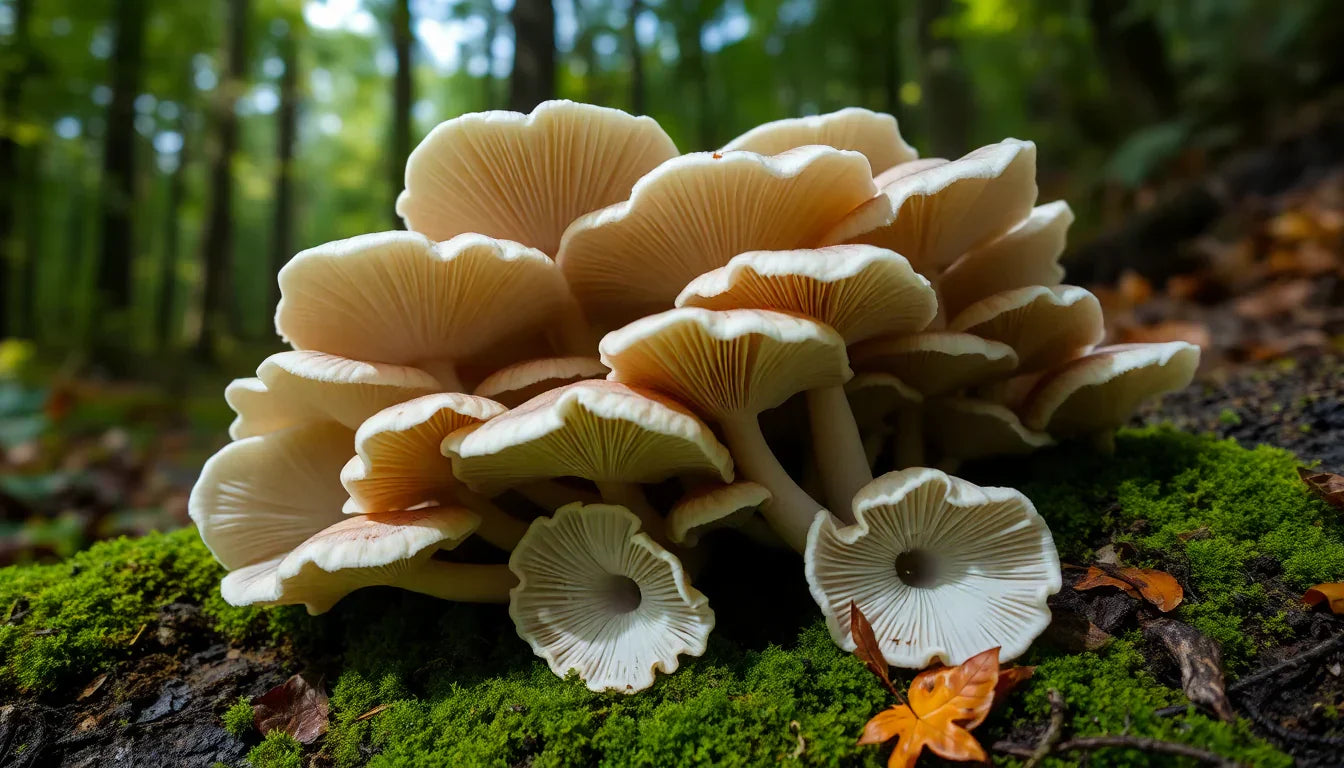

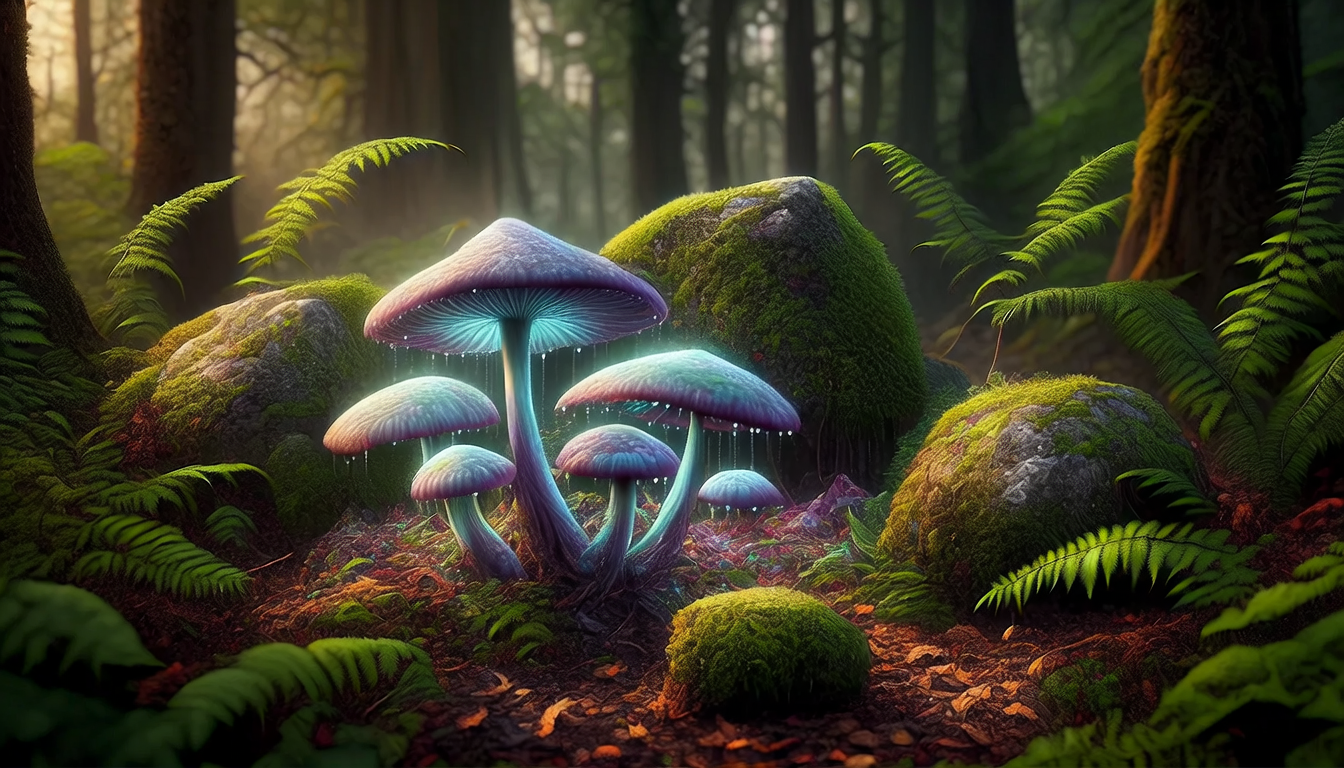
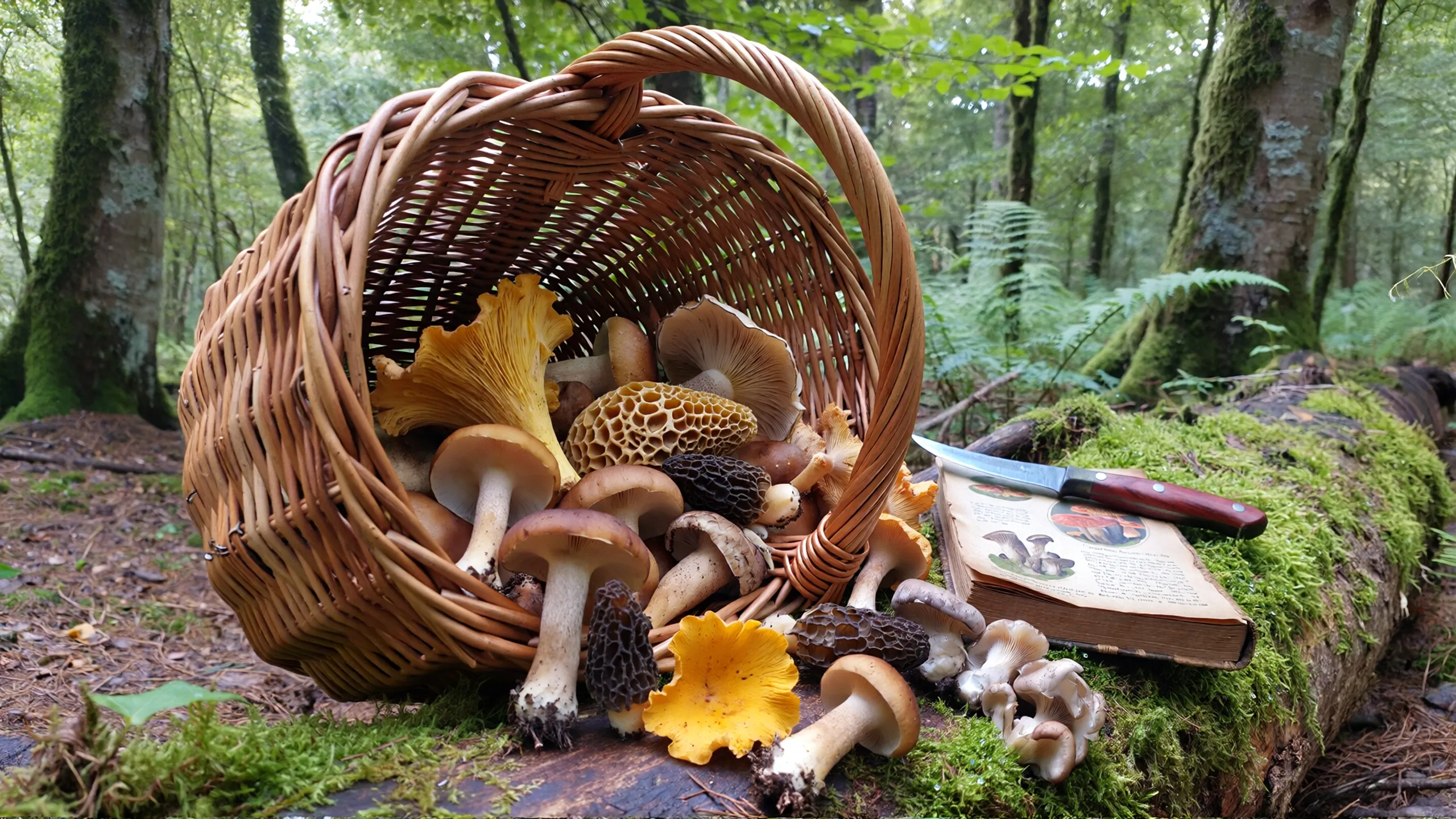

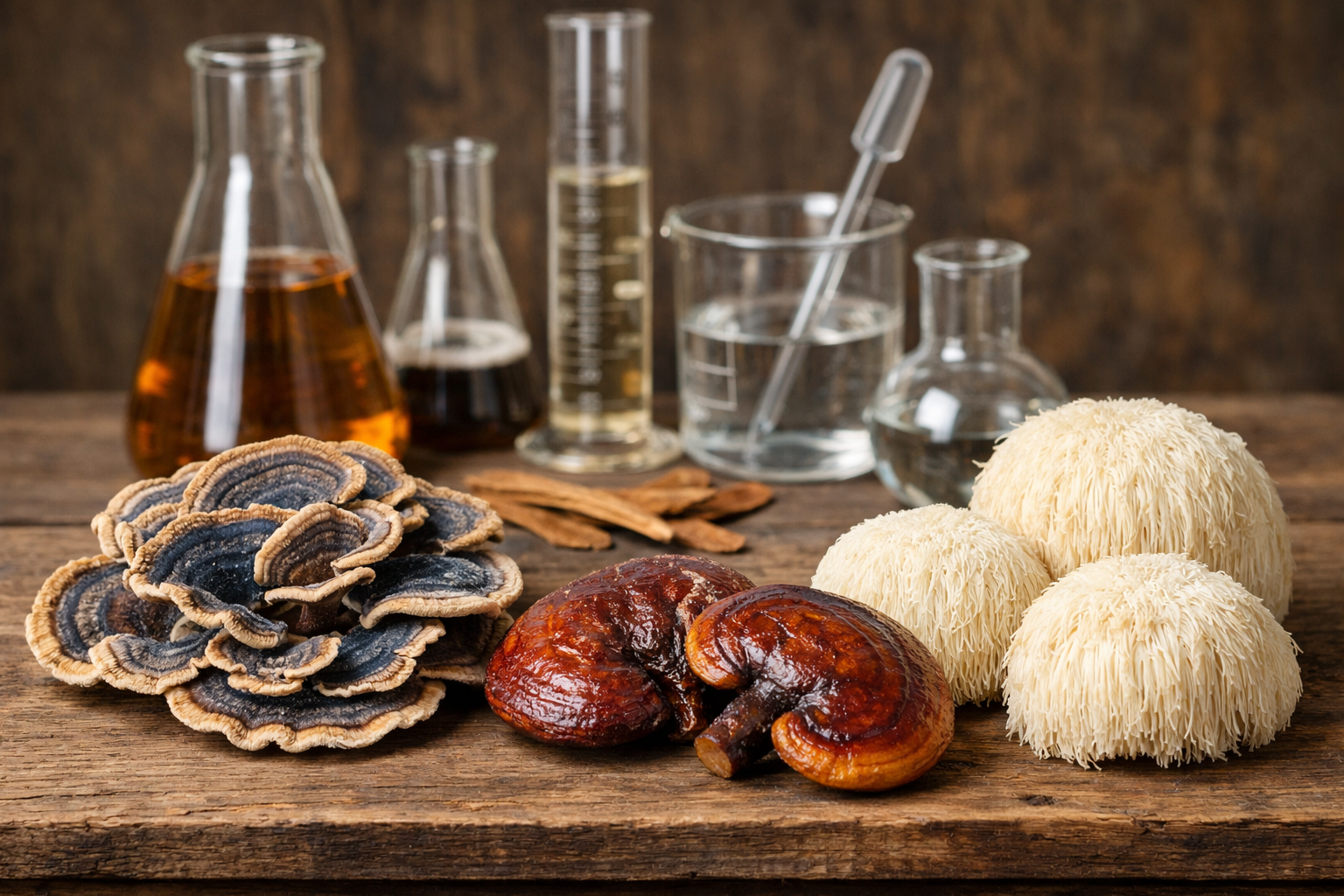
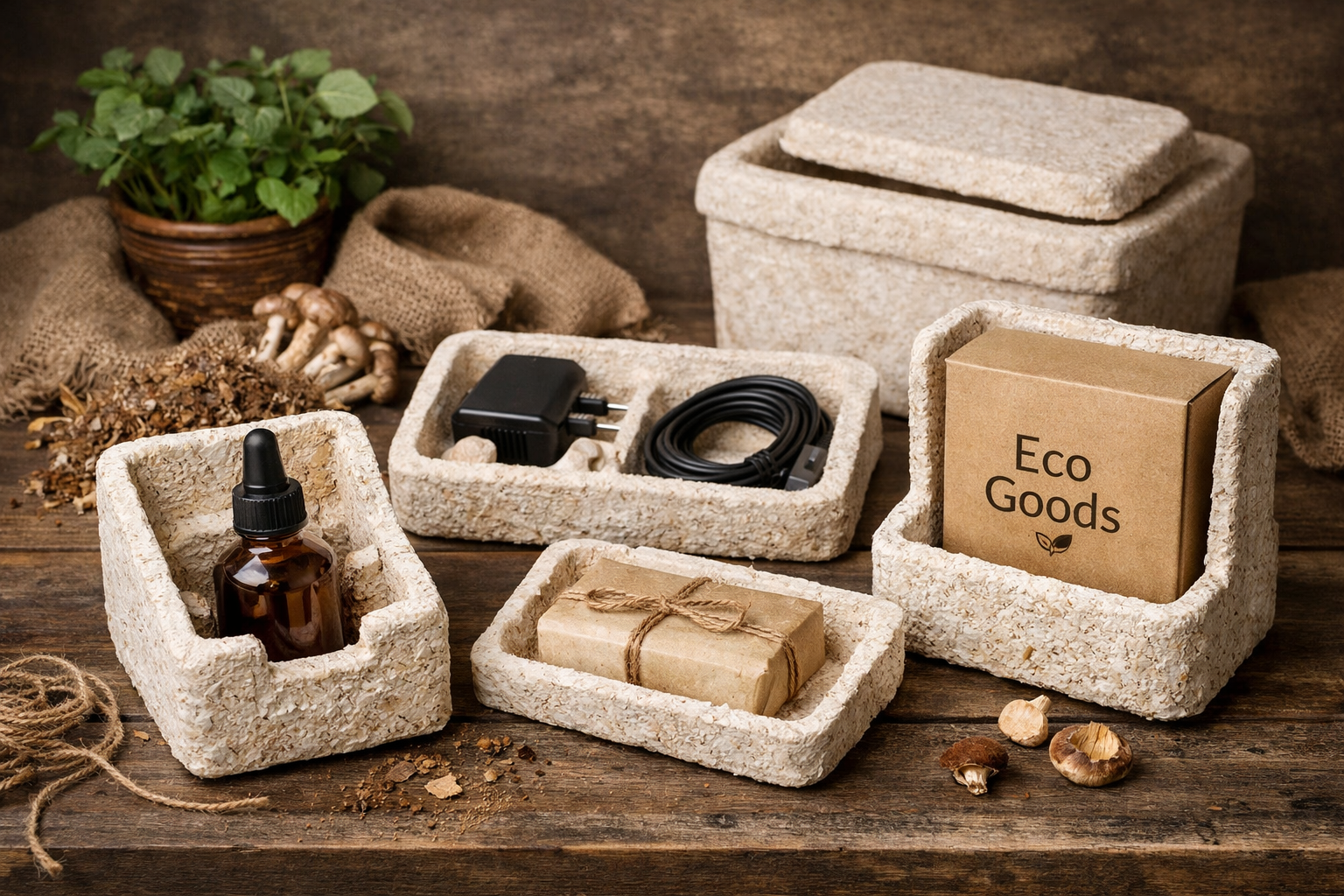
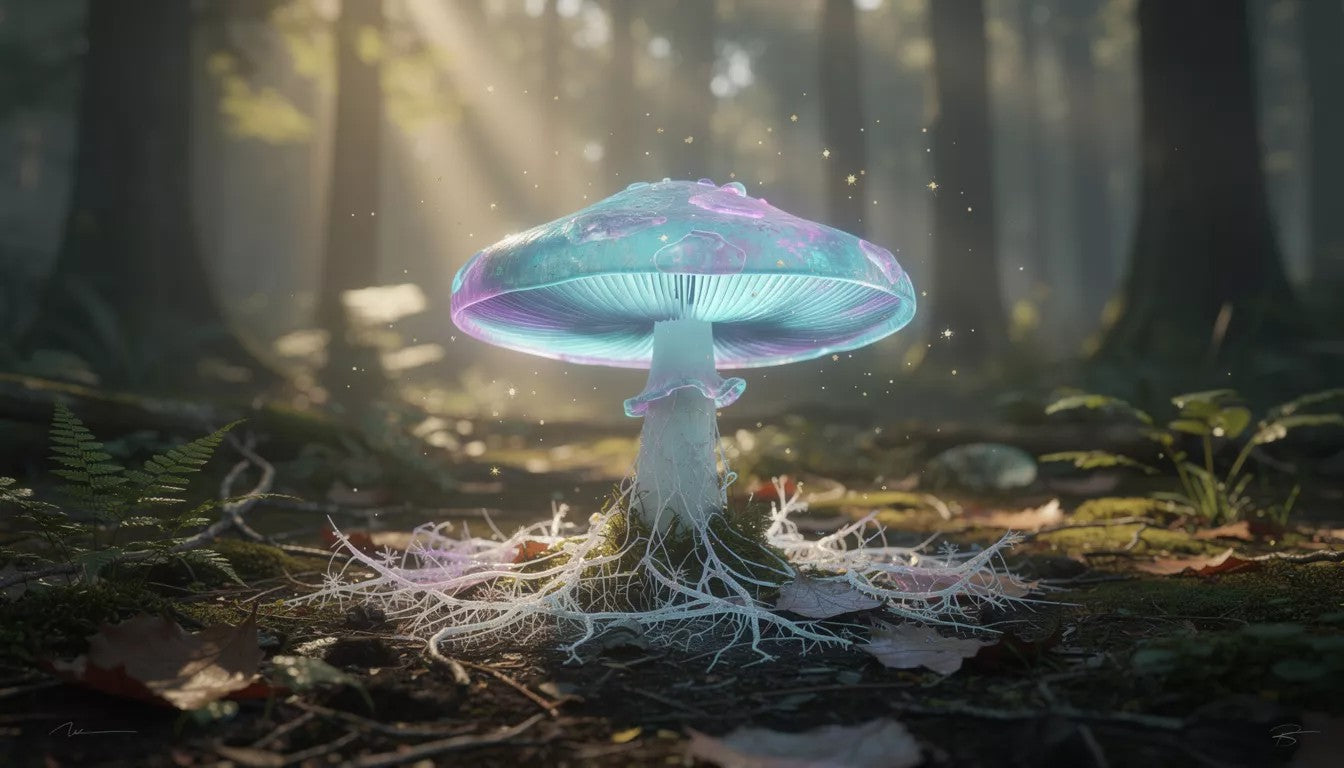
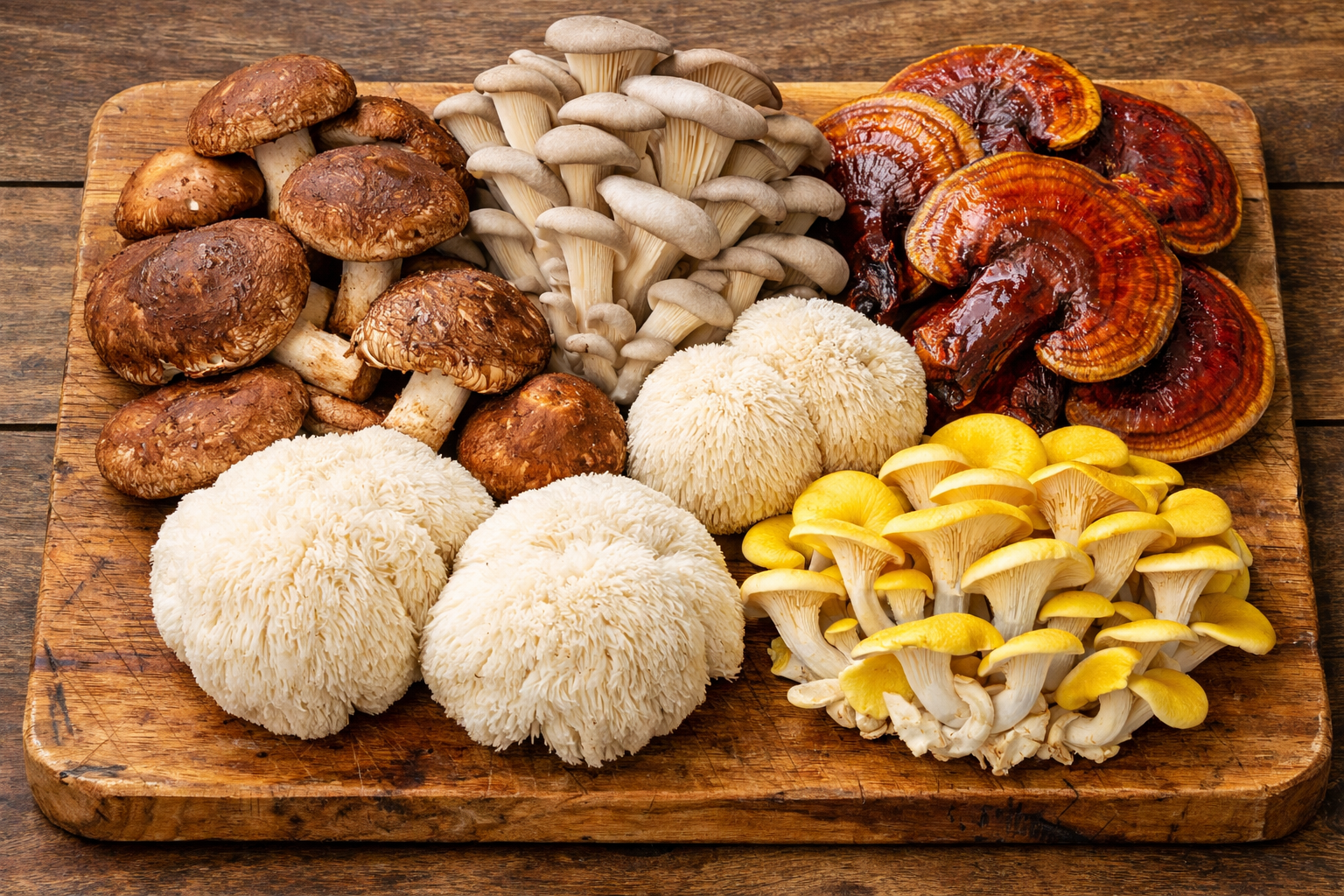
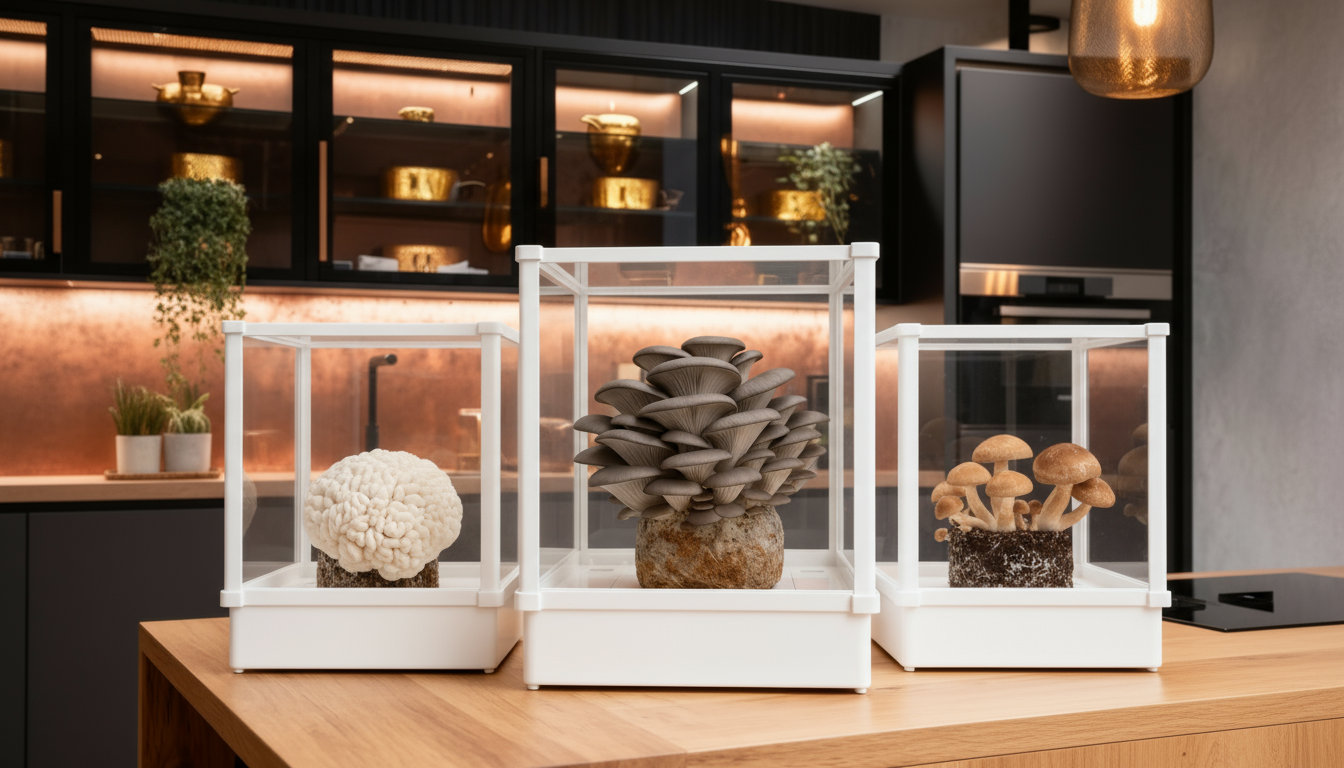
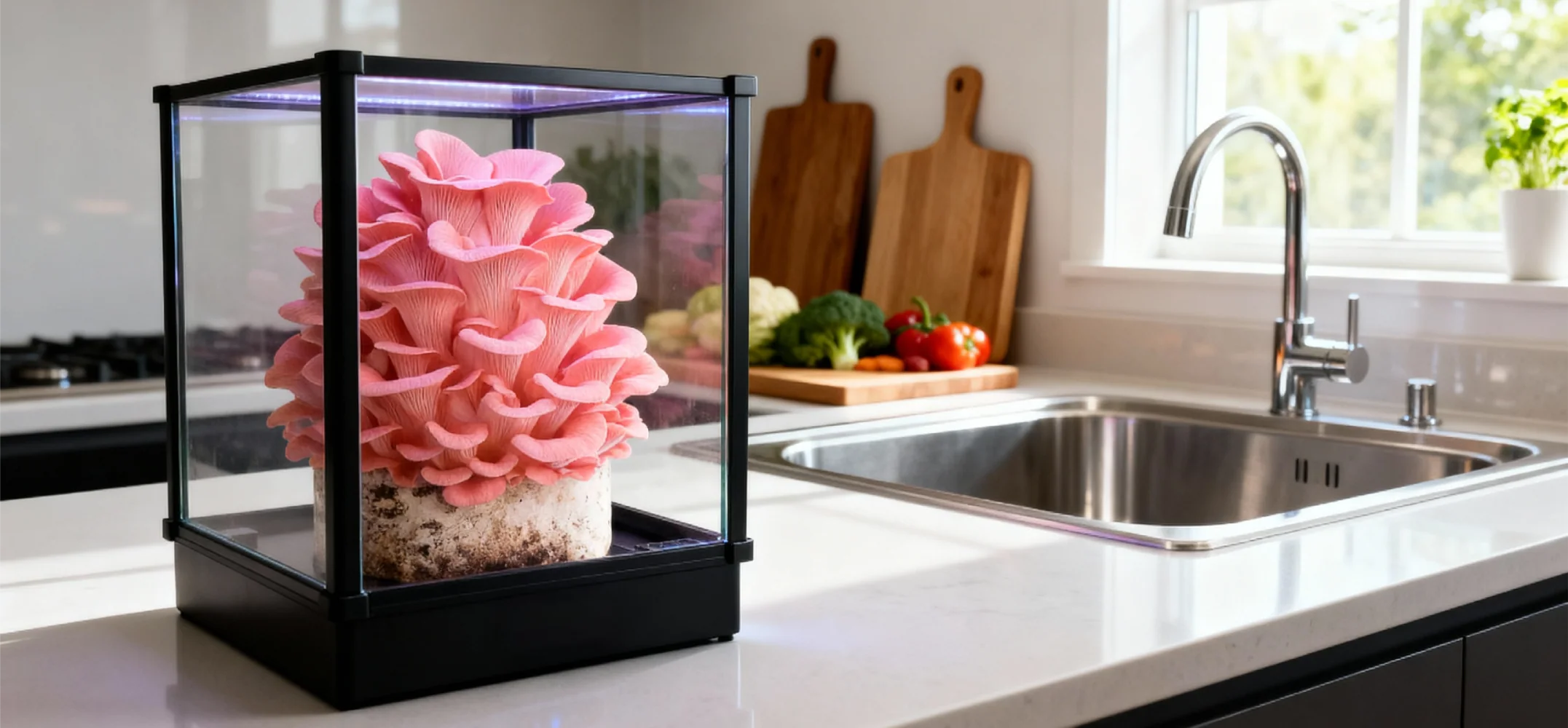
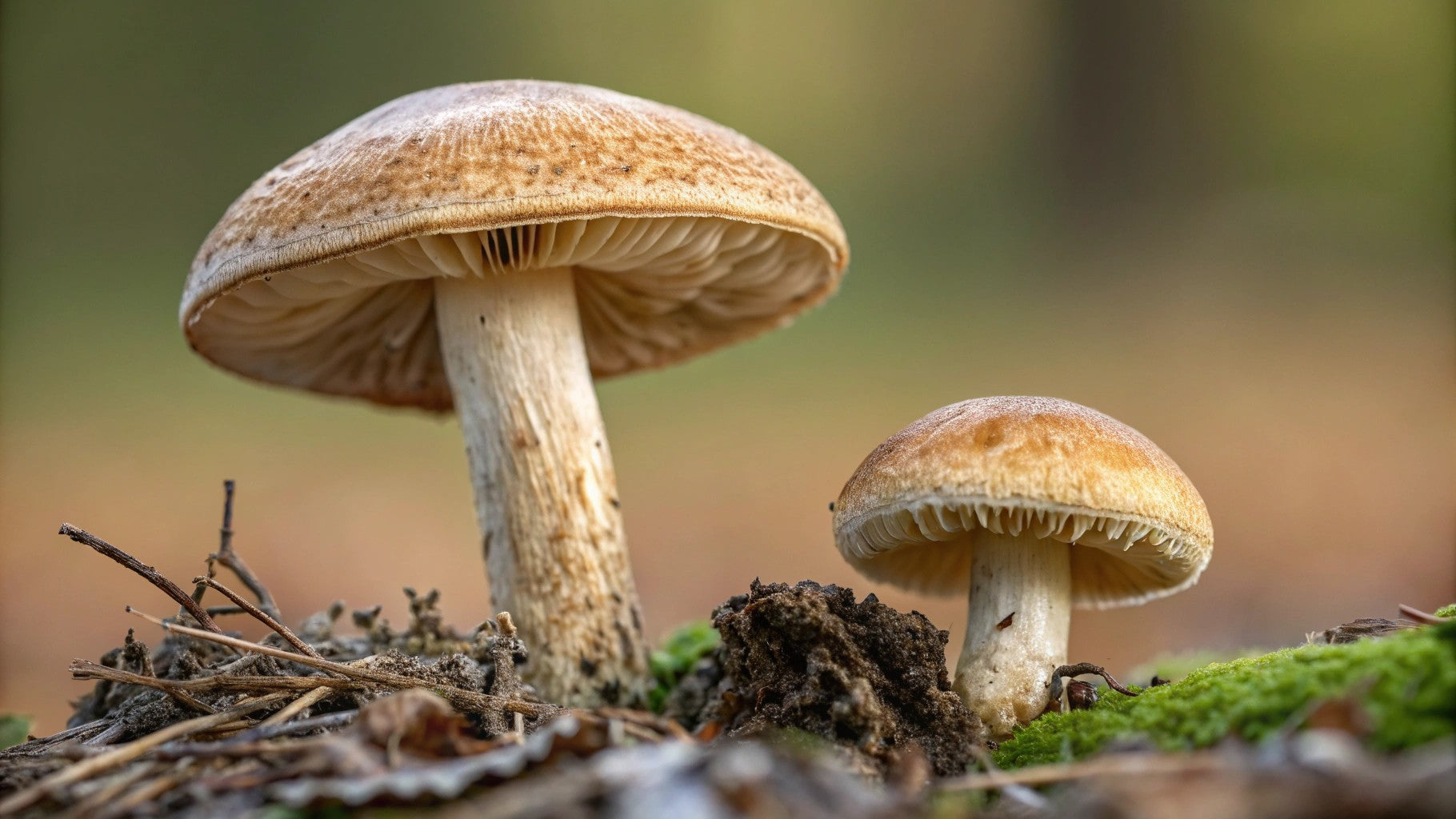
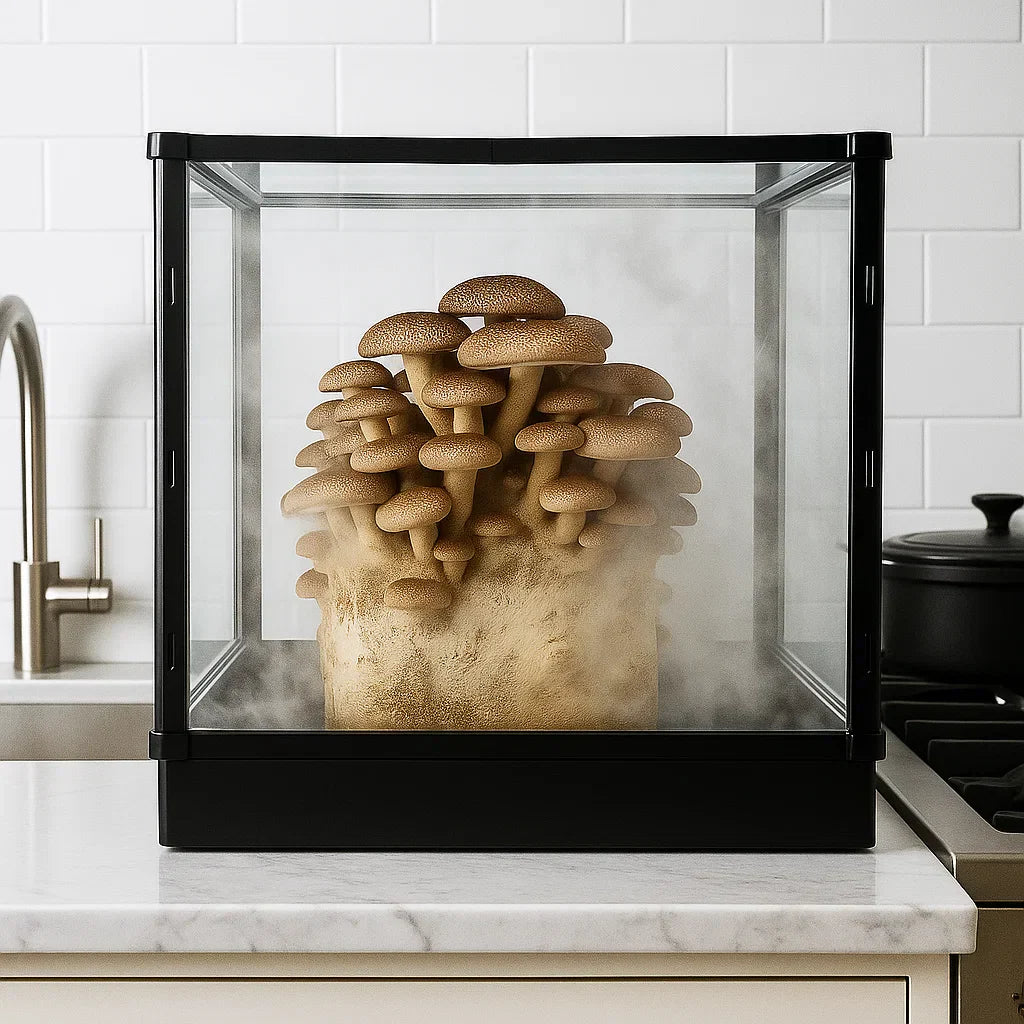
Share:
How to Cook King Oyster Mushrooms Perfectly
Oyster Mushroom Nutrition: A Delicious Dive into Nature’s Superfood